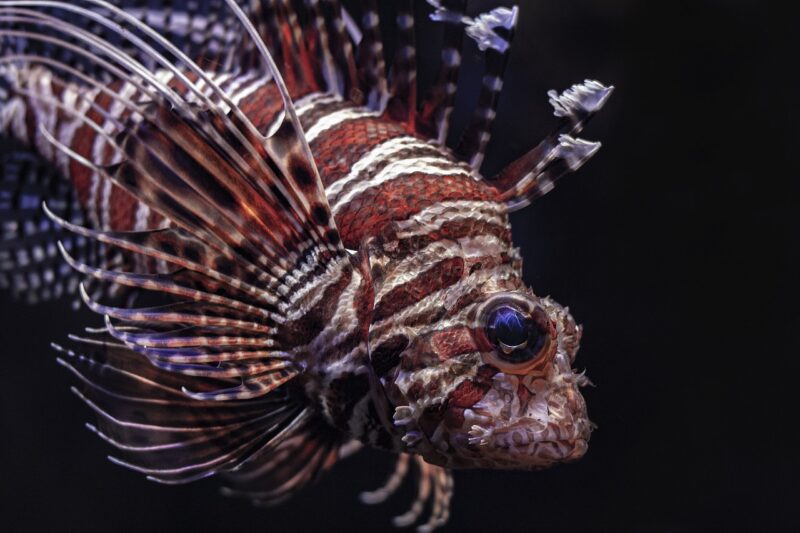10 Surprising Facts About Fish You Probably Didn’t Know
November 11, 2024

Fish are often seen as simple creatures, swimming mindlessly through the water, but the reality is much more fascinating. There are over 32,000 species of fish worldwide, and many exhibit behaviors and characteristics that are truly remarkable. In this article, we will explore ten surprising facts about fish that will change how you think about these aquatic animals forever.
—
1. Fish Can Communicate
Fish are far from silent; in fact, they have a range of ways to communicate with each other. While many species lack vocal cords, fish can produce sounds by using their swim bladders, rubbing together bones, or popping their jaws. Some fish, like the infamous croaker and grunt, are known for their distinct sounds. Not only do they communicate with vocalizations, but many species also make use of body language, color changes, and even pheromones to convey messages to one another.
—
2. They Can Feel Pain
For years, the scientific community debated whether fish feel pain. Recent studies have shown that fish do have pain receptors in their bodies and are capable of feeling discomfort. When injured, fish have shown behavioral changes, such as reducing their activity levels or avoiding areas where they have experienced pain. Understanding this aspect highlights the importance of humane treatment of fish in fisheries and aquariums.
—
3. The Oldest Known Fish
The sturgeon is among the oldest species of fish still in existence today, having existed for over 200 million years. These ancient fish can live for several decades, with some individuals reaching up to 100 years of age! Their unique bony scutes and long bodies have changed little over time, making them true living fossils in our waters.
—
4. Fish Have a Unique Reproductive Strategy
Fish exhibit a variety of reproductive strategies, from live-bearing to egg-laying. Some fish, like guppies, give birth to live young, while others, such as salmon, lay thousands of eggs that develop outside of their bodies. Even more intriguing, some fish exhibit parental care, where they look after their young after they hatch, protecting them from predators until they’re ready to fend for themselves.
—
5. Fish Have Color Vision
Fish are adept at seeing a broad spectrum of colors, far beyond what humans can perceive. Many species possess specialized cells in their eyes called cone cells that allow them to detect ultraviolet light, a spectrum invisible to the human eye. This ability helps fish in recognizing mates, avoiding predators, and finding food among the colorful corals and plants of their environments.
—
6. Some Fish Can Change Gender
In certain species, environmental factors can trigger a sex change. For example, clownfish are born male, but if the dominant female dies, the largest male will undergo a transformation into a female to take her place. This fascinating phenomenon of sequential hermaphroditism is not only intriguing for scientists but highlights the social dynamics of life in coral reefs.
—
7. The Moonfish
One of the largest bony fish species is the moonfish (Mola mola), which can weigh over 2,200 pounds and measure up to 10 feet in length. Despite its massive size, the moonfish primarily eats jellyfish. Their unique shape and ability to sunbathe at the surface of the ocean make them stand out in the marine world, drawing attention from divers and marine enthusiasts alike.
—
8. Fish Can Get Sunburned
Just like humans, fish can suffer from sunburn. Species that inhabit shallow waters or spend time near the surface can be susceptible to harmful UV rays. Fish such as the cleaner wrasse and clownfish secrete mucus onto their skin, which acts as a protective barrier against sun damage.
—
9. They Have Built-in Sunscreen
Many species of fish produce skin pigments, mainly called melanin, that serve as a natural sunscreen, protecting them from the harmful effects of sunlight. This pigmentation not only provides protection but can also help fish attract mates through vibrant colors. Variations in color can signal health status, genetic fitness, or readiness to breed.
—
10. The Largest Migration on Earth
While many people are familiar with the migration of birds or the wildebeest in Africa, the ocean hosts the largest migration on Earth: the nightly migration of zooplankton. Fish are integral to this cycle as they travel from deep waters to the surface at night, herbivorous fish feeding on plankton, while carnivorous fish take advantage of this abundance of prey. This migration plays a crucial role in the marine food web and highlights the interconnectedness of oceanic ecosystems.
—
Conclusion
Next time you encounter fish—whether in an aquarium, at the beach, or at dinner—recall these remarkable facts. Understanding the intelligence, social behavior, and unique adaptations of fish can lead to greater appreciation and conservation efforts aimed at protecting these essential creatures in our ecosystems.








